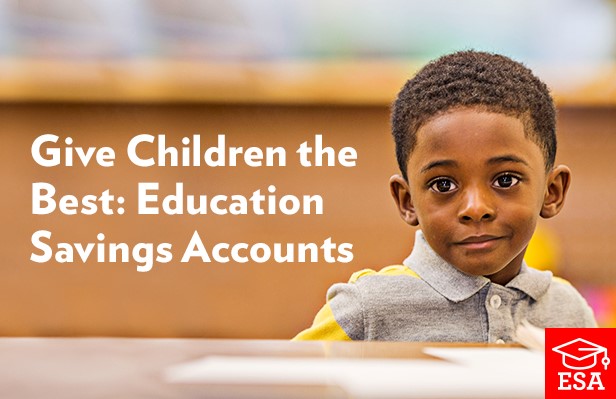Media

Changing Lives with Education Savings Accounts
Education Savings Accounts (ESAs) empower parents to personalize the academic experience for their children, as CF explains in a recent policy brief. But ESAs are about more than school choice.
They are changing lives for families in need.
ESAs have only existed for a short time—enacted in 2011 in Arizona and 2014 in Florida. But the stories of children served—and saved—by these flexible spending accounts are growing by the dozens.
Jordan Visser, a nine-year-old in Arizona diagnosed with cerebral palsy and dyslexia, was one of the first children to benefit from an ESA. Thanks to his ESA, Jordan receives more individual time with a reading teacher for the visually impaired, as well as his physical therapist:
When Katie Swingle’s son, Gregory, was eighteen months old, doctors worried that Gregory’s autism would prevent him from being able to speak. But thanks to Florida’s ESA program, seven-year-old Gregory is not only speaking, he’s writing in cursive. Watch Gregory’s mother describe the impact of ESAs on her family:
Consider Max Ashton, an eighteen-year-old in Arizona born legally blind, who used the ESA funding for specialized education and college tuition:
Eighteen-year-old Max Ashton is an ESA recipient in Arizona. Max is an exceedingly bright and ambitious young man. He was also born legally blind and has additional needs in school. This is why, when given the option to use an ESA in 2011, Max’s parents jumped at the chance. Marc Ashton, Max’s father, said of the decision:
A blind student in Arizona gets about $21,000 dollars per year to educate that student. We took 90 percent of that, paid for Max to get the best education in Arizona—the best education in Arizona—plus all his Braille, all his technology, and then there was still money left over—still money left over—to put toward his college [tuition]. And so he is going to be able to go on to Loyola Marymount University…and do extremely well, because we were able to save money even sending him to the best school in Arizona over what the state would normally pay for.
ESAs were also life-changing for Kasey Locke, a six-year-old diagnosed with autism who was not best-served by the local public school:
Rebecca Locke was frustrated with her daughter Kasey’s academic progress. Six-year-old Kasey is autistic, and when she started kindergarten at the local public school, her parents worked with school officials to incorporate a new learning method, applied behavioral analysis (ABA), into Kasey’s school work. “We were looking for different modes of treatment for her and came upon applied behavioral analysis, and that’s the only treatment that’s been empirically shown to cause improvement.”
But her parents were frustrated because Kasey’s school couldn’t incorporate ABA methods into her full school day. It really wasn’t the school’s focus to use this type of treatment. “We did look into private schooling, but there was no way we could financially reach that.”
Then, when Arizona passed educational savings accounts into law, “it was almost too good to be true” for the Lockes. With an education savings account, Kasey’s portion of state education funding would be deposited into an account her parents could use for any educational services.
The education savings account has been life-changing for Kasey, who now attends Chrysalis Academy, a private school that incorporates ABA tools. Recently, Kasey visited her speech therapist, who was “amazed” with Kasey’s progress. Her parents say the education savings account has been “a huge success for us.”
The experiences of Jordan, Gregory, Max, and Kasey must be replicated for all Pennsylvania families seeking the same type of educational opportunity. Everyone deserves access to this life-changing program.